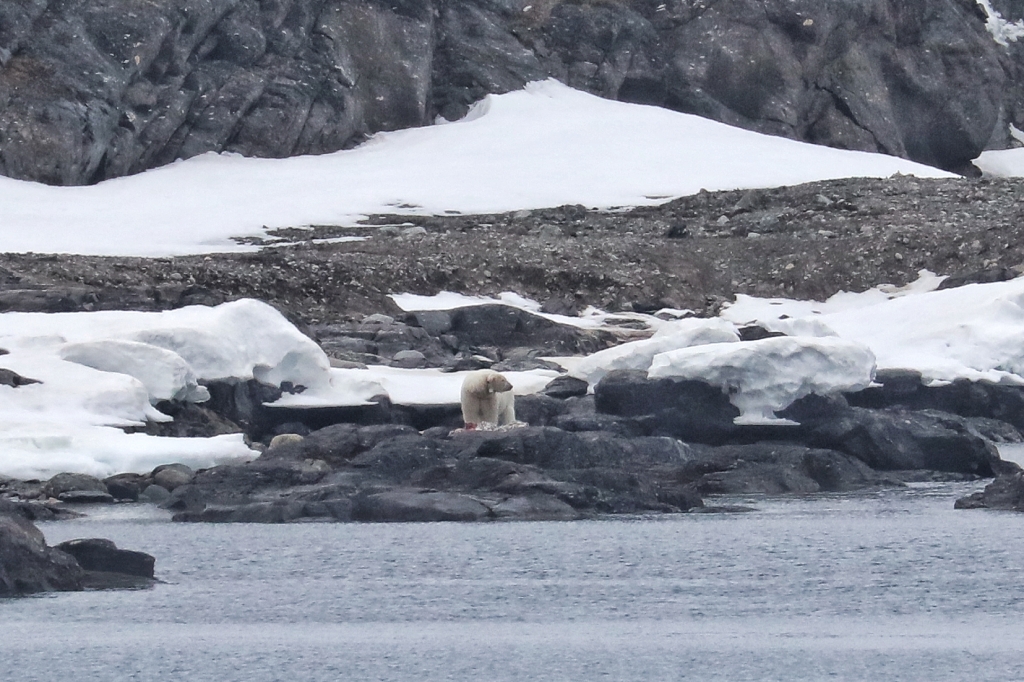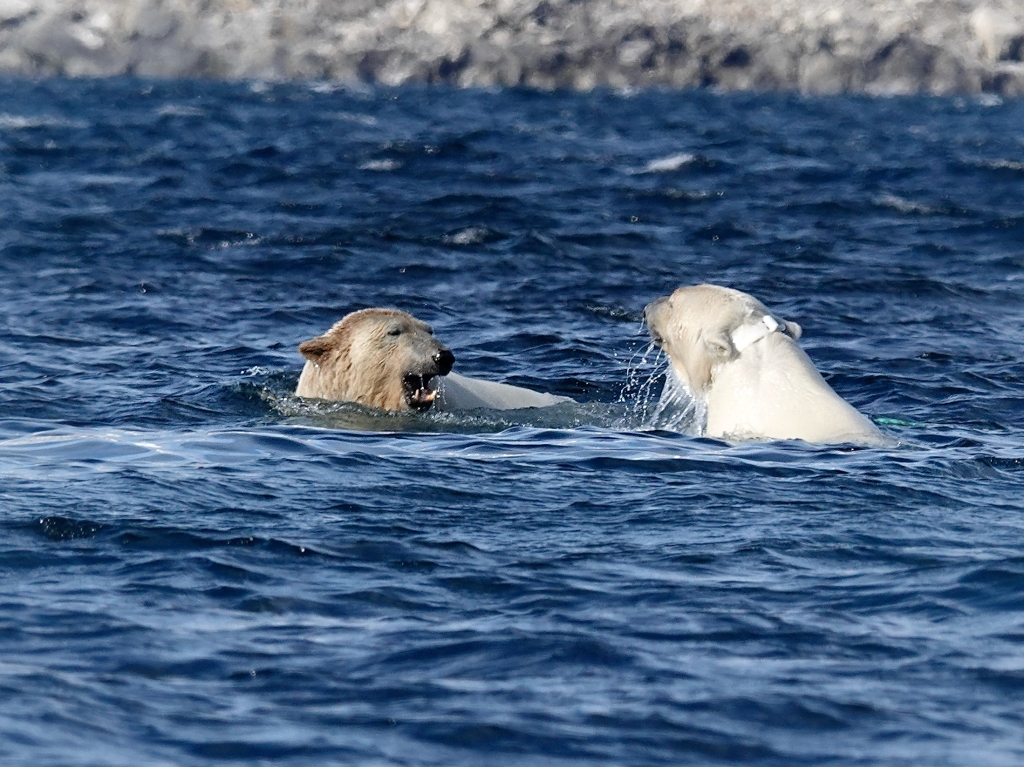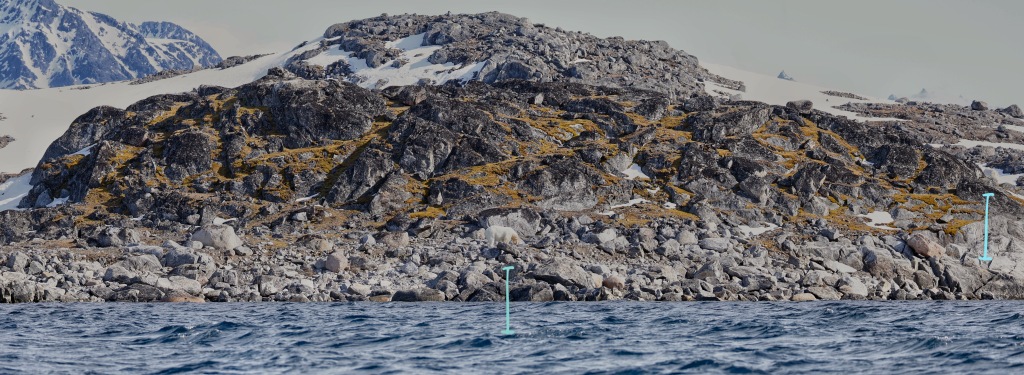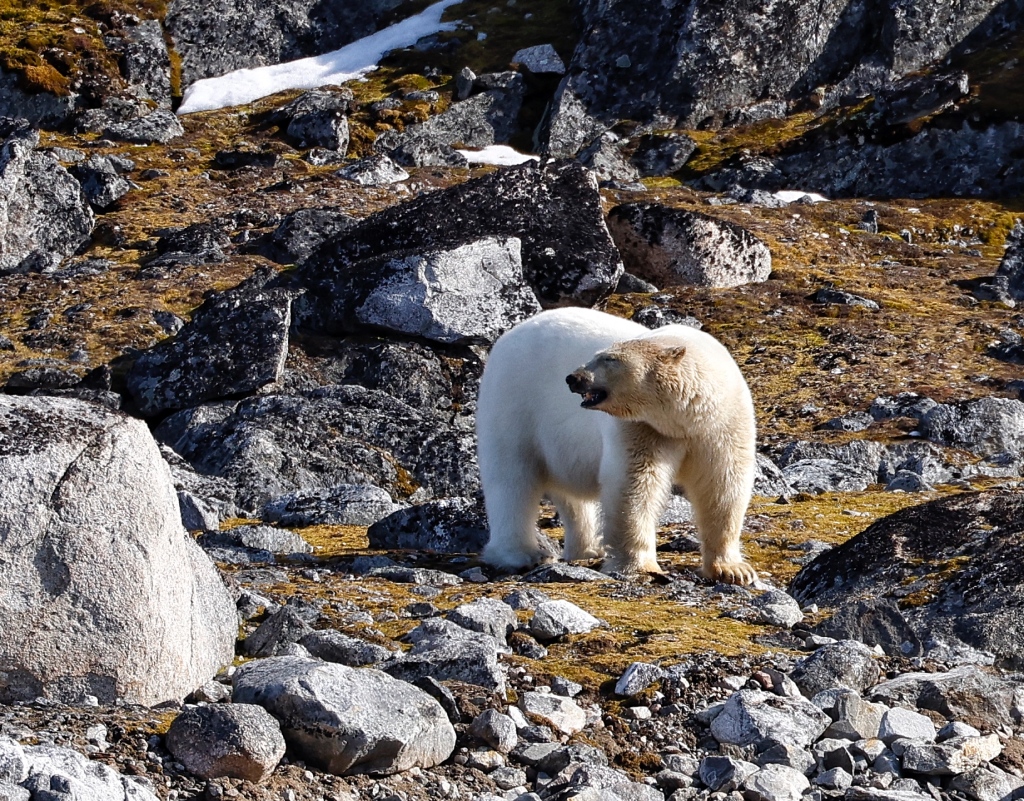Polar bears are uniquely adapted to survive in one of the harshest environments on Earth. We picture them as the apex (top) predators on land (which they are), but they are actually marine mammals, capable of swimming long distances between ice floes or between distant points of land. In fact, a bear might travel 1500-15,000 square miles in a year in search of prey, using a combination of swimming, walking, and floating on ice floes. They can swim continuously using their powerful forelegs for 3-4 days at a time, covering more than 100 miles.


Cold tolerance is one of the key adaptations of all arctic mammals, but polar bears have evolved their own unique method of achieving it. Their fur coat consists of two layers, a short dense underfur, and a longer fur of guard hairs that are hollow spaces, lacking pigment, surrounded by a thick keratin shell. This one characteristic turns out to be the key to heat conservation for polar bears because heat from the skin that radiates toward the surface, first through the dense underfur, and then through the guard hair layer is trapped in the slender, air-filled tubes. This system works so well to trap the bear’s heat that they are invisible to thermal imaging! In addition, like other marine mammals, polar bears carry a thick layer of blubber beneath the skin as additional insulation. Of course all this insulation then makes the polar bear vulnerable to overheating in the summer sun.


Close-up shots of these two bears gave us a chance to admire their other characteristics. Polar bears are huge. A big male might be 5 feet at the shoulder and its head might be at 10 feet when the bear stands up on two legs, which is a useful behavior when trying to spot seals lying on the ice. And their feet are huge, flat, dinner-plate sized pads with hair on the bottom of the pad to provide some friction against icy surfaces. Short but very sharp claws at the tips of the digits of the front paws are essential for gripping the ice shelf to propel them from the water onto the ice and for latching onto their prey.

Polar bears have long snouts, small ears, and very small eyes. They use their heightened sense of smell to detect the presence of potential prey, rather than their eyesight. In fact, they can smell seals and other marine mammals on the ice from 20 miles away, and even detect a seal’s breathing hole from a half mile away. Their jaws are not large or particularly powerful, but their teeth are adapted for a carnivorous diet with very sharp canines and a space between canines and molars to accommodate biting off large chunks of meat.

Polar bears adapt their hunting strategies to their prey with a combination of stalking, camouflage, sit-and wait (by a breathing hole), and surprise attack from behind their prey. The video by David Attenborough below shows their behavior well. It’s significant to note, however, that these sorts of surprise attacks are only successful about 5% of the time!
(If you’re reading this post in your email, you won’t be able to see the video. Instead click on the title of the blog post to take you directly to the blog URL to view the video,)
Majestic apex predators of the arctic — what a treat to see them in action!

Great post. Where did you get all that great bear info?
Thanks for asking! Numerous resources and publications on the web. Plus, we did have a talk one evening on the ship about polar bear biology from one of the naturalists.
It was fun to read all about polar bears and to see the photos. What a thrill to be there, in-person! Attenborough’s video is incredible! Amazing animals!
And it was equally fun learning about them and what unique specializations they have. Truly amazing animals! Thanks for your comment.
Great video, Sue. Thanks for sharing. And, a great post, as always!
What a wonderful adventure what a great description of these magnificent animals. What tour group are you with?
Terry
This was a Quark Expeditions tour on a smallish ship with about 150 passengers and a couple dozen naturalist guides. Very well run, and the trip was FREE because the company had to modify our original trip from 10 days to 7. Food, drinks, and excursions were all covered, so all we paid was the airfare. It was actually the perfect length of trip and variety of experiences!
Wonderful – Thanks!
What an adventure! Thanks for taking us along.
It certainly was — glad you enjoyed the summary!